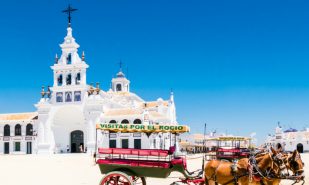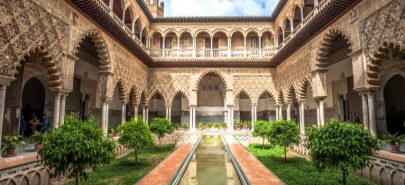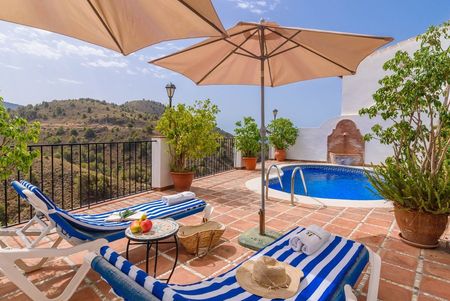Find out the main characteristics and the big differences between the Holy Week in Malaga and Seville.
Malaga and Seville arguably celebrate the Holy Week in a truly impressive way. After talking about the Holy Week in Andalucia, we keep digging into the secrets of the Holy Week, specifically those of Malaga and Seville.
Holy Week in Malaga
The Holy Week in Malaga was declared Interés Turístico Internacional in 1980, after almost 500 years of history. More than 40 brotherhoods carry their thrones through the streets of Malaga from Palm Sunday (Domingo de Ramos) until Easter Sunday, being the most magnificent and solemn those on Maundy Thursday (Jueves Santo) and Holy Friday (Viernes Santo).
Every day of the Holy Week, a certain number of processions fill the streets with their colours and music during more or less eight hours, departing from and ending in their see (Casa Hermandad), the only day on which the streets remain mute being Holy Saturday (Sábado Santo). During these days, the streets are populated by the inhabitants of Malaga, as well as tourists from all over the world, who come here to live the Holy Week in an extremely picturesque and unique way. Everyone can’t help but applaud as the thrones pass by.
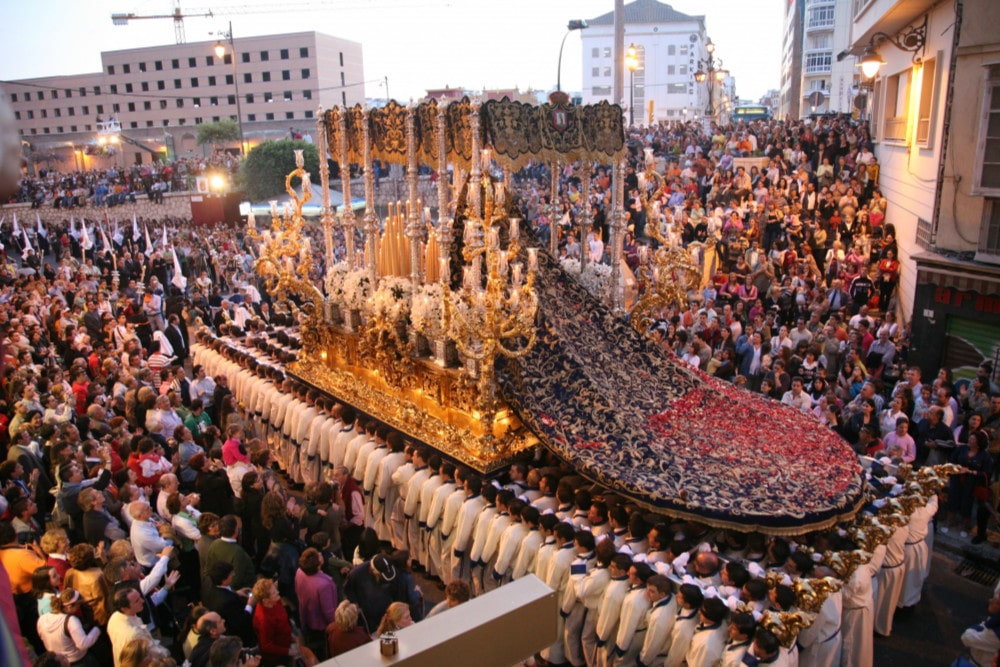
The EMT (Empresa Malagueña de Transporte) provides an augmented service of buses during the whole week, giving the possibilities to go to the city centre by bus and enjoy every part of the procession. This service covers the encierros (that is to say, the moment the thrones enter their sees), the last part of the processions that may happen extremely late at night depending on the brotherhood, and which are truly breathtaking. And you can take our word for it! In fact, despite the fatigue of the processions, the men carrying the throne (hombres de tronos) dance while entering the see at the sound of the National Anthem played by the Marching band.
Although every brotherhood has its own itinerary, all of them must complete a Recorrido Oficial, an official stretch that includes the Alameda Principal, Calle Marqués de Larios, and Calle Granada. After that, every brotherhood follows its route to go back to its see.
Since the Recorrido Oficial is almost impossible to access during Holy Week, one of the most famous sites where to enjoy the passing of the thrones is the Tribuna de los Pobres. This 16-step stair at the end of Calle Carretería, whose name means “Platform of the Poors”, is where people are used to sitting and waiting for the main brotherhoods to carry their thrones.
In order to choose which one brotherhood to see, we leave you a short summary about the brotherhoods that populate the streets of Malaga during the Holy Week:
- On Palm Sunday, the brotherhoods of Pollinica (known as “the brotherhood of children”), Lágrimas y Favores, Humildad y Paciencia, Humildad, Huerto, Dulce Nombre, Salutación, Salud, and Prendimiento.
- On Holy Monday (Lunes Santo), the brotherhoods of Crucifixión, Columna, Dolores del Puente, Pasión, Estudiantes, and Cautivo.
- On Holy Tuesday (Martes Santo), the brotherhoods of Rocío, Penas, Nueva Esperanza, Humillación y Estrella, Rescate, and Sentencia.
- On Holy Wednesday (Miércoles Santo), Mediadora, Salesianos, Fusionadas, Paloma, Rico, Sangre (the oldest of the city), and Expiración.
- On Holy Thursday (Jueves Santo), Santa Cruz, Cena, Viñeros, Mena, Misericordia, Zamarrilla, Esperanza, and Vera+Cruz.
- On Good Friday (Viernes Santo), Dolores de San Juan, Monte Calvario, Descendimiento, Traslado y Soledad, Amor, Piedad, Sepulcro and Servitas.
- On Easter Sunday (Domingo de Resurrección), Resucitado, accompanied by a representation of the 45 brotherhoods, with colorful-roped Nazarenos that make this procession the most joyful of the whole week.
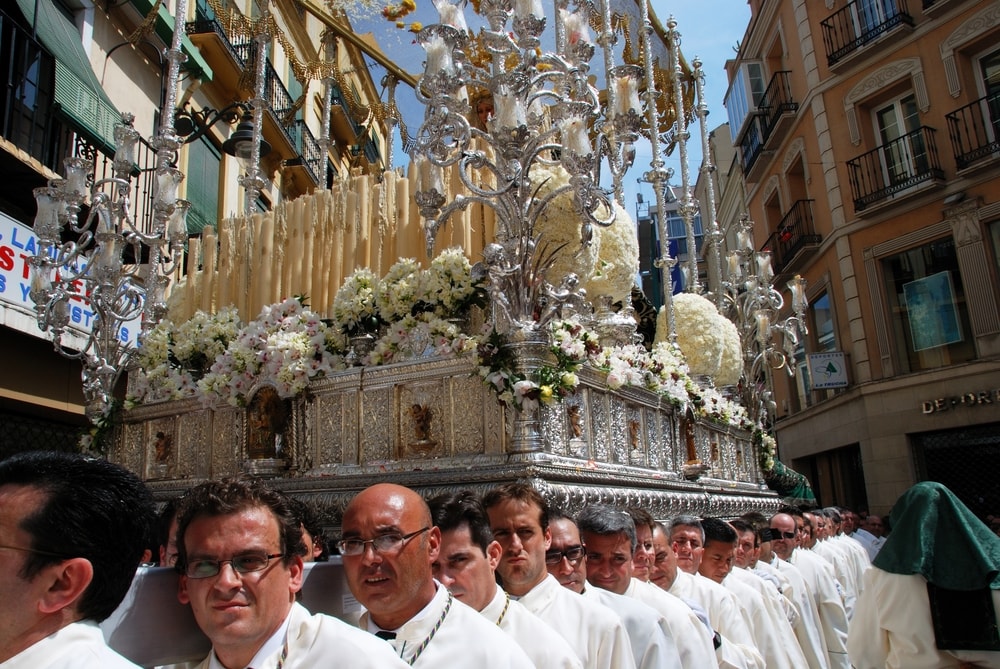
Before the Holy Week, the brotherhoods carry the images of Jesus and the Virgin Mary on a small throne from the church where they are conserved to the see of the brotherhood in small processions called Traslados, and after the Holy Week, from the brotherhood to the Church in which they will be conserved until the next year.
Holy Week in Seville
Holy Week in Seville, also declared Interés Turístico Internacional, is undoubtedly extremely important for the Catholic population of Andalucia. It presents similar characteristics with the Holy Week in Malaga, although there are a few differences, that can be resumed in the following:
- Instead of carrying the thrones on their shoulders, the believers, called sack men or costaleros, carry the pasos, smaller than the thrones in Malaga, on their neck and walk under the structure.
- The processions, or penitent stations, happen all week long, from the Friday before Palm Sunday until Easter Sunday, therefore including Holy Saturday, too.
- While in Malaga the Nazarenos are given their ropes by the fraternity they belong to, in Seville, they have to make them by themselves.
- The Nazarenos give the children little printed images of the brotherhood in Seville, and wax from the processional candlesticks in Malaga.
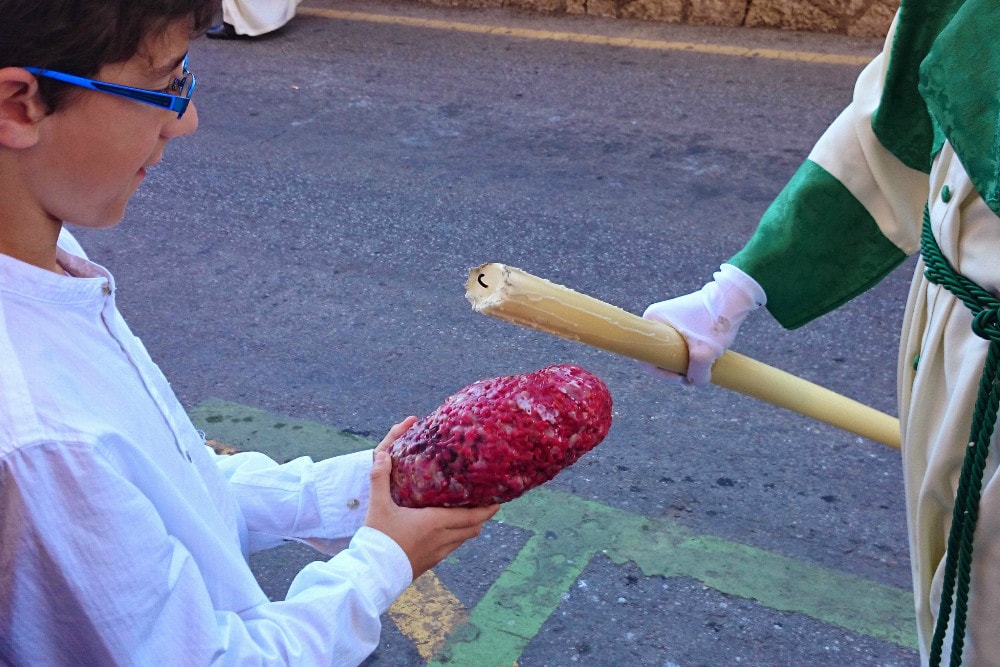
Places to stay in Malaga and Seville
Now that you know everything about the Holy Week in Malaga and Seville, you may want to spend the week in Malaga or Seville to enjoy the true atmosphere. If you are looking for a place to stay, check the holiday homes in Malaga
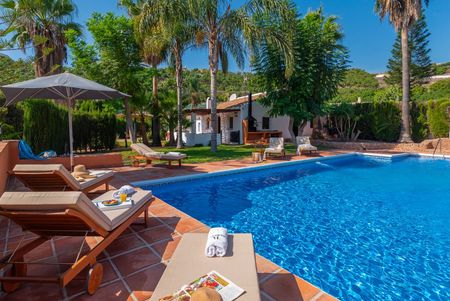


and the holiday homes in Seville, a place to relax and recharge batteries before and after seeing the majestic processions.
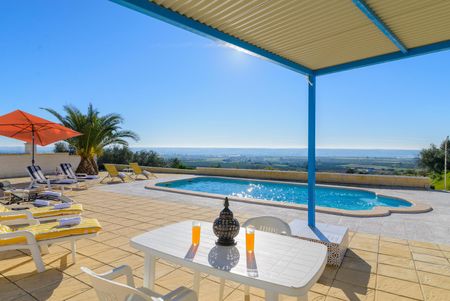
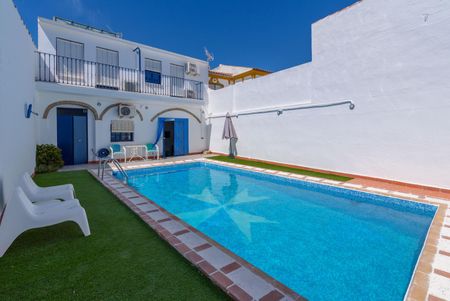
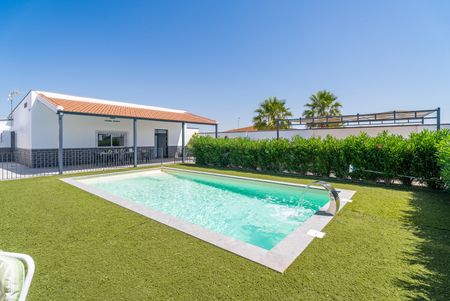
The Holy Week in Malaga and Seville is incredibly spectacular, and it is waiting for you to enjoy it as the Andalusian people themselves!
Do you have any more doubts or questions about the Holy Week in Malaga and Seville? Do you want to dig deeply into the information about this celebration? How do you plan to spend the Holy Week in Malaga and Seville? Leave a comment, we want to know!

